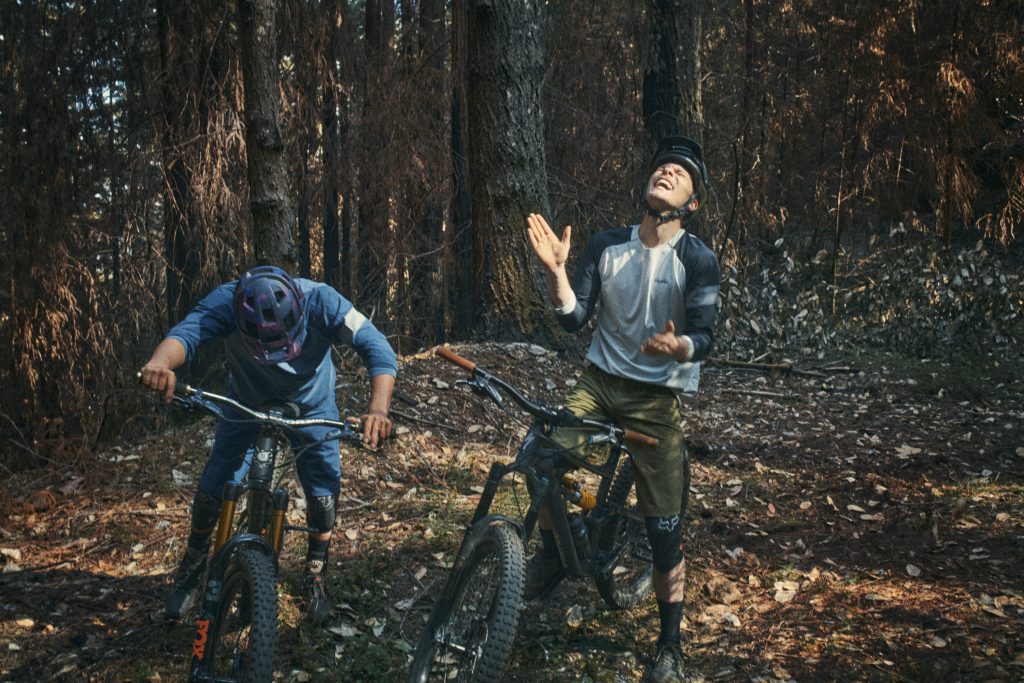Interview: James Pawson, Sportswear Apparel Designer at Rapha
The London-based brand combines contemporary style with performance cycling gear in their new City Collection

Back in 2004, Rapha upended the cycling apparel industry when they started making gear that was more stylish, comfortable and innovative—rebuffing the garish (often juvenile) styles that dominated at the time. From using Merino wool—and updating it by blending it with synthetics for less sag and faster drying—to featuring upscale elements found in designer garments, the brand’s dedication to premium fabric, construction and sophisticated aesthetics made for elegant, elevated bike gear. Respect for the brand has only grown over time, and today Rapha has a reputation for quality apparel and accessories that last.
While the brand has always been for cyclists, the new City Collection (comprising a three-in-one coat, sweatshirt, over-shirt and pants) not-so-subtly spells a shift for Rapha. It’s no surprise that the designer of that collection is James Pawson, who admits he was hardly a serious cyclist when he came to the company five years ago—after working with G-Straw Raw and artist/designer Aitor Throup, whose projects almost always resist orthodoxy. The City Collection was created as an amalgam of performance gear and streetwear. Pawson tells us, “This was really 80 percent off-bike, 20 percent on.” As such, there was room to skip body-hugging silhouettes and what Rapha’s typically “athlete default” mindset. We recently spoke with Pawson to find out more about the keystone product of the collection—the Insulated Gore-Tex Field Coat—and how it illustrates a higher-level direction for the brand.
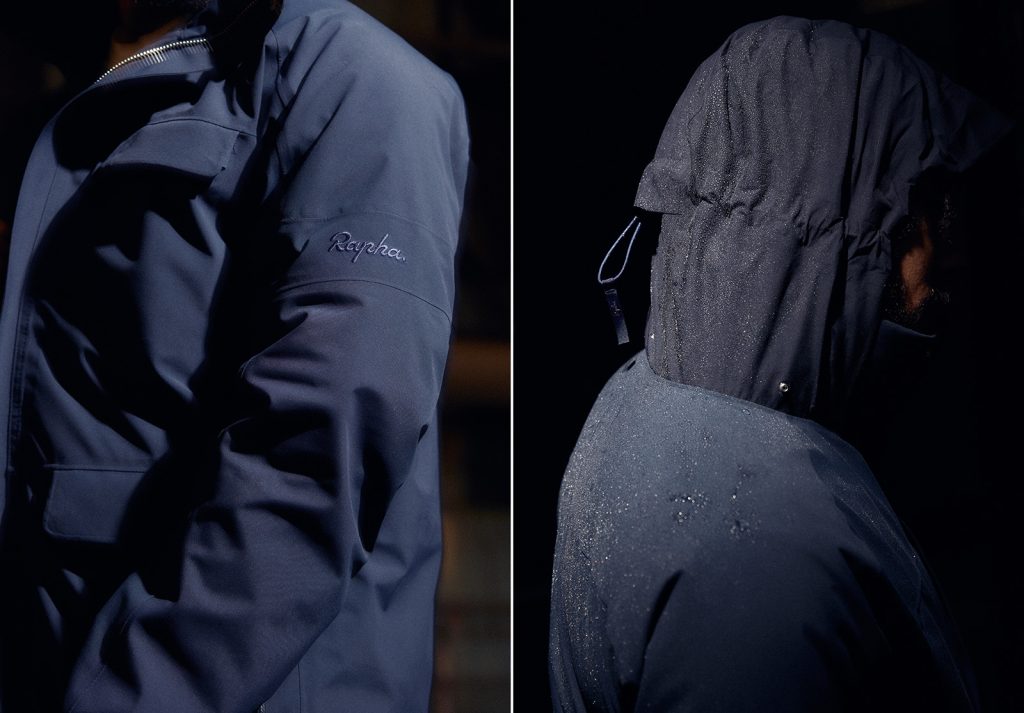
You’ve said you owe a debt to Massimo Osti, the founder of Italian sportswear brand C.P. Company. Why is that and how does that relate to the City Collection and beyond?
We were thinking about the design brief of the City Collection and I think maybe I just got one of his books or saw an exhibition or something that really piqued my interest. I loved his experiments, his clash of materials, his clash of fabrics—taking over military designs and really taking them out of context. There was some really exciting stuff there. That led me to look at some of the classics, and that’s the M65 Field Coat, which is like an icon in the US. It’s an icon of menswear, period. It’s been referenced by so many designers for so many years. I’ve always wanted to do something with it and this seemed like a really interesting opportunity to do a modern Rapha interpretation of it.
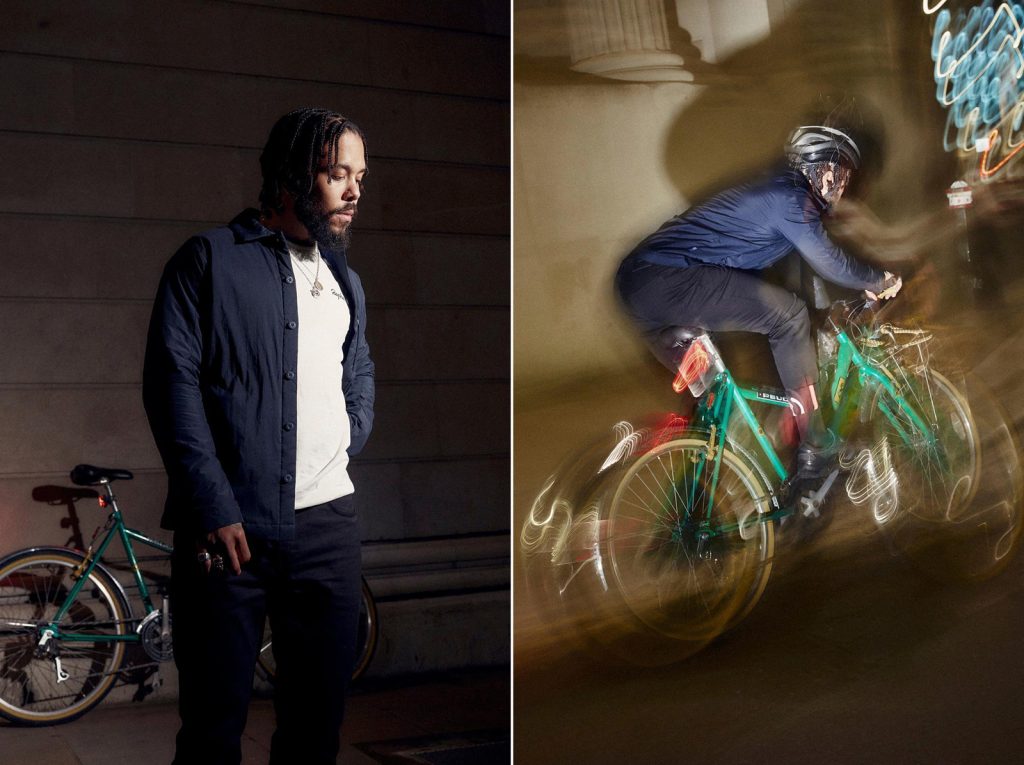
From the Field Coat through to other garments, there are more boxy silhouettes in this collection—something Rapha typically avoided in the past. Can you tell us about that?
Previously Rapha has been fairly slim, fairly tailored. With this range it was such a balance between that Rapha sartorial reference point and attracting some new customers. It lets you wear the City Collection a little bit oversized. That lets Rapha get younger. It’s also the case that performance doesn’t always need to be overt. With these pieces we’re showing that you can have functionality—it’s just in the background.
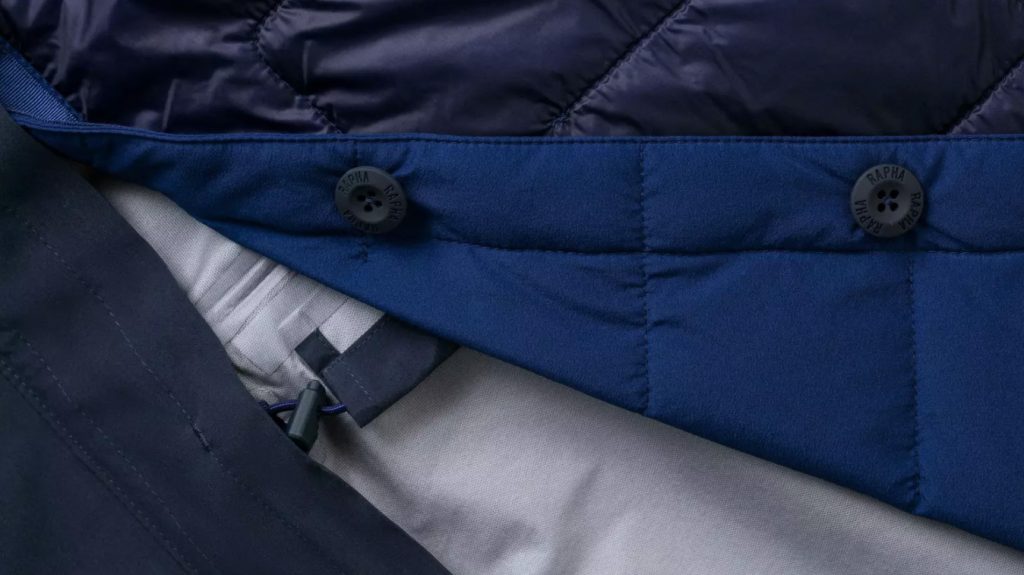
Can you point to that background performance?
With the Field Coat, we’re trying to tell Rapha customers a story but kind of subtly. The shell was taken from our Classic Wind Jacket (that’s using a Japanese lightweight woven shell) and then the lining on the detachable liner is taken from our Brevet-insulated products. So there’s this extra layer of detail. Because if your customers bought the on-bike product, I want them to have that same sensorial experience—the material echo would be like, “Oh I felt that material before.” Even if you don’t really give it another thought, that’s the authenticity of our products. You’ve worn this on your bike, you know it performs and it lasts. Not many brands bring that level of legitimacy to their lifestyle products. And we’ve got more coming with this kind of thinking, so that’s really exciting.
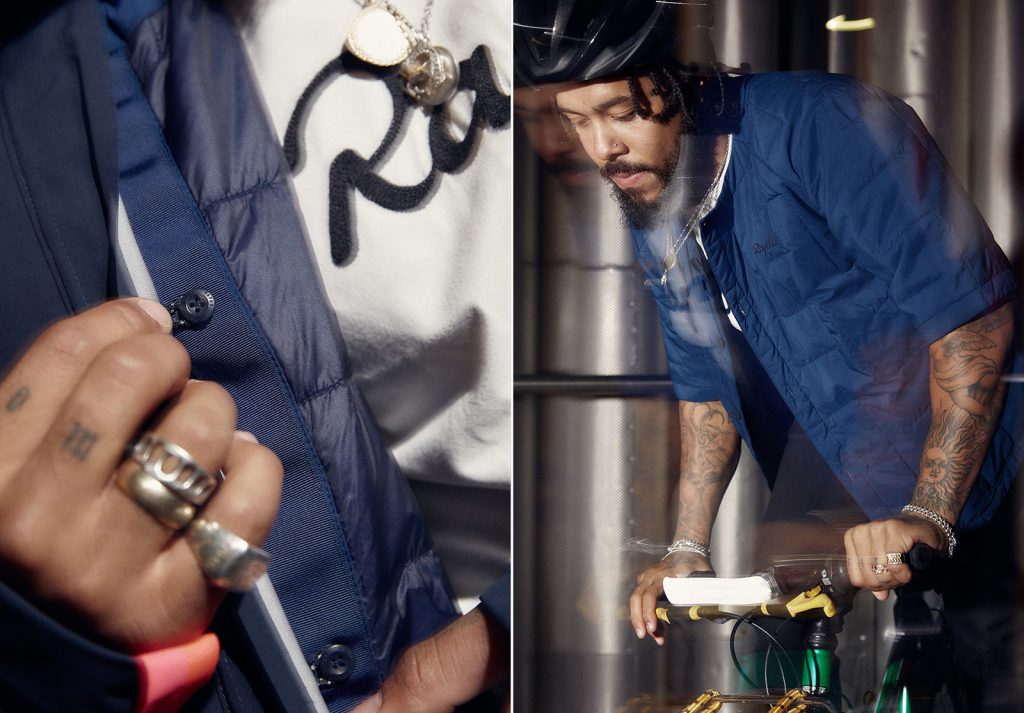
You built three pieces in one with the Field Coat. Take us on a tour of the liner, which was built as a standalone garment.
The liner is designed as 100 percent streetwear. You can wear it with a hoodie, you can wear it with a T-shirt. The idea was to expand not just the temperature range of the Field Coat—so you can take that alone and wear it into autumn or add the liner and wear it into winter—but also to give people two separate coats, which isn’t what they did with the M65. We’ve updated the quilt pattern to a rounded rectangle, and that’s a pattern you’re going to see more and more in future products. All successful lines get some sort of subtle signature.
Can Rapha’s signatures—like the color pop of high-vis pink—work in the transition to streetwear?
We have to own that. That is our signature and that’s something that I will always hold on to. Brands spend years trying to get these signatures. The Levi’s tab is perfect—that can be no other brand. How can we do that with Rapha, but subtly? That’s our challenge.
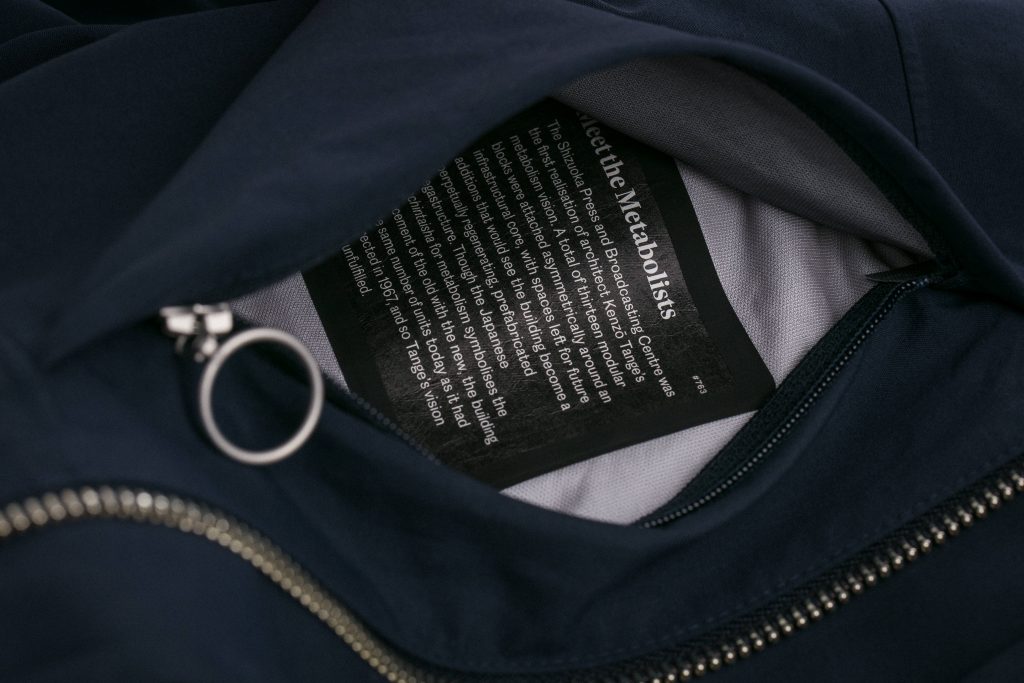
Rapha does already have that with the small story labels (that tell anecdotes and tales) hidden inside each piece. In the City Collection, these aren’t stories about bikes or bike racing—again the brand is going far broader.
Right! This shows the level of energy we’ve lavished on what we do. I spend a lot of time researching, and for this collection I was looking at urban planning and got obsessed with how designers have thought they could engineer cities. There’s this book called Dream Cities by Wade Graham and he looked at people like Le Corbusier but also at failed ideas—like a ring road that might’ve been built that would’ve destroyed the West Village in Manhattan. I wanted the story labels to tell people about how cities have evolved. If you can learn a cool detail about a city in a city product, it’s dope. It’s that kind of surprising depth that brings people back to us.
Images courtesy of Rapha

